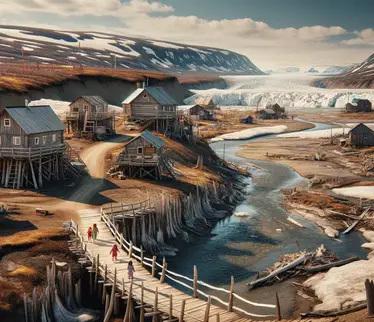The small Yup’ik village of Newtok, Alaska, situated on increasingly unstable permafrost along the eroding banks of the Ninglick River, has initiated a pioneering full-scale relocation due to climate change. This effort has set it apart from other Alaskan communities facing similar threats, but the pace of this massive endeavor has been frustratingly slow, according to residents deeply involved in the process.
In 2012, children in Newtok navigated a boardwalk to reach school in a community grappling with erosion, flooding, and permafrost thaw. The relocation process to Mertarvik, a safer location about 9 miles away, is still underway, with over half of the village’s population now settled there. “There is no blueprint on how to do this relocation,” noted Carolyn George, a local school employee and resident, highlighting the logistical and emotional challenges of moving an entire community without prior experience.
Mertarvik, which means “getting water from the spring,” was selected as the new site in 2006 after years of planning and debate. By 2019, the first residents began moving into their new homes, with ongoing plans to have the entire community relocated by the fall. Despite the challenges, including funding uncertainties and logistical delays, the goal remains clear: to leave no one behind. This sentiment is echoed by Newtok and Mertarvik’s unified local and tribal governments, emphasizing their commitment to maintaining community cohesion throughout the transition.
The move, while historic, is part of a broader context where 31 Alaskan communities are identified as facing imminent environmental threats. The progress in Newtok offers a potential blueprint for others, even as some, like the village of Kivalina, encounter setbacks in their own relocation efforts.

